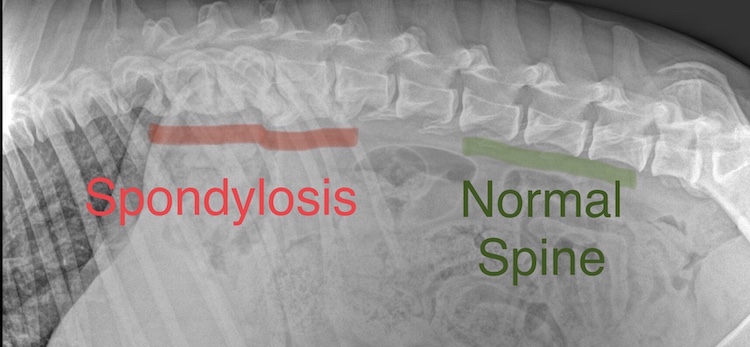Signs:
- Lameness
- Back pain
- Difficulty rising or laying down
- Inability to jump
- Difficulty getting on and off objects
- Muscle wasting
Spondylosis does appear to have a genetic component; meaning that a dog who has spondylosis may pass on the propensity to develop it to their offspring.
Diagnosis is made using x-rays, but additional testing may be needed to rule out other causes of bony changes along the spine such as infection and cancer. In some cases, spondylosis can be involved in spinal cord compression and an MRI may be needed to diagnose this. Surgery may be needed to remove bone spurs that impinge on the spinal cord.
Treatment for spondylosis generally involves pain control. This can include medications, chiropractic care, acupuncture, laser therapy, or physical therapy. See the page on arthritis treatment and joint supplements for more information on these different options.
For more information:
Veterinary Partner - Spondylosis







